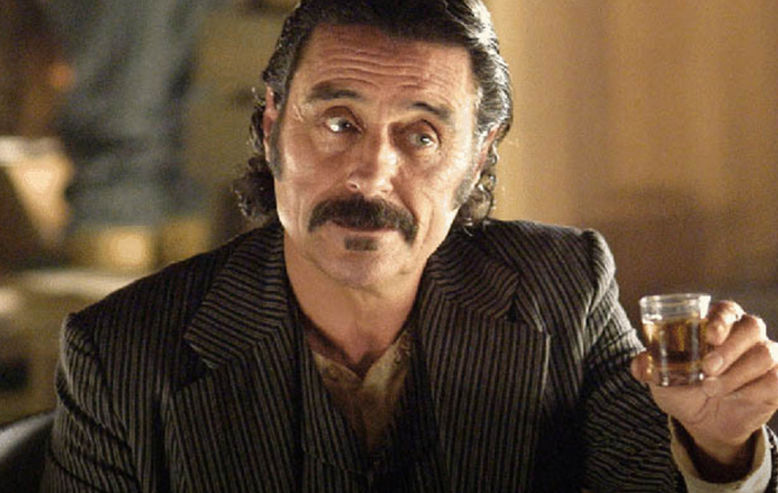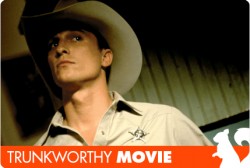This article is from our friends at Trunkworthy
Deadwood didn’t just give us Timothy Olyphant’s first run as a lawman; it also gave us Ian McShane’s portrayal of TV’s most complex and compelling anti-hero.
Let’s face it: A lot of you turned the dial midway through Episode 1, or took a permanent sandwich break during Episode 2. Some of you claimed an aversion to westerns. Look, Deadwood is no more a western than The Wire is a cop show or Mad Men is about advertising. Like a novel or those great films of the ’70s, it uses one story to tell another. And didn’t The Wire and The Sopranos teach you that epic storytelling takes seasons to evolve? Especially when the story comes packed with complex themes and loaded with Shakespearean tragedy.
In other words, it takes time to truly appreciate Deadwood. Fortunately,Deadwood’s time has come. The show’s recently shown up on some most-talked-about legacy ratings, but we don’t see it in the top 10, where it used to be and where we think it belongs. And we’re here to correct that.
Which brings us back to your aversion to westerns. What looks like a classic western (OK, it does have a saloon…and horses, gunfights, a crazy preacher…) is actually a show about evolution, both communal and individual. The characters might try to escape civilization, they might try to escape order, but they can’t, as in any society—even one composed of pimps, whores, cardsharps, thieves, dope-heads, and all-purpose drunks. To exist in Deadwood, they have to adapt, to conform, if only out of sheer necessity. And in that process, they’re changed, even if involuntarily.
Cloaked in the guise of a western that’s not a western (but is, paradoxically, more authentic about the West than almost any other western), the show centers on the most compelling character in television history. Yes, even more than Tony Soprano, all due respect. Saloonist/opportunist Al Swearengen is a shaken cocktail of a man, composed of equal parts wise, weary, cruel, and kind. He begins like an archetypal villain, but by mid-Season 1, he’s clearly so much more. Without losing his survivalist sensibilities, he’s taken on the roles of protector, father figure, government leader, and deeply poetic, wounded soul. Rather than being a more villainous Tony Soprano, he is, in many ways, a more optimistic version of Tony Soprano. He’s able to evolve, even against his own will…and without a therapist.
And you might not believe that Deadwood has some of the strongest, most interesting women characters in television. But it does. Characters who start out as madams, prostitutes, and drug-addicted socialites begin to find themselves a camaraderie and a power over men that’s believable—not a fairy tale. Alma Garrett, who’s laudanum-addicted and dragged along by her fortunate-hunting husband, opens a bank. Trixie, who seems to be under Al Swearengen’s boot, sometimes has equal power, though it’s not expressed or agreed upon. Martha Bullock, who’s in a marriage of obligation, starts the local school. In other words, they begin playing roles in the institutions that turn the camp into a town, a town into a society.
So, we ask you: What were you thinking when you decided to not watchDeadwood? Better yet, we ask you to think again. Can you take your eyes offThe Sopranos: The Complete Series Gift Set for a minute and lock them on a show you had no good excuse for not watching in the first place?












